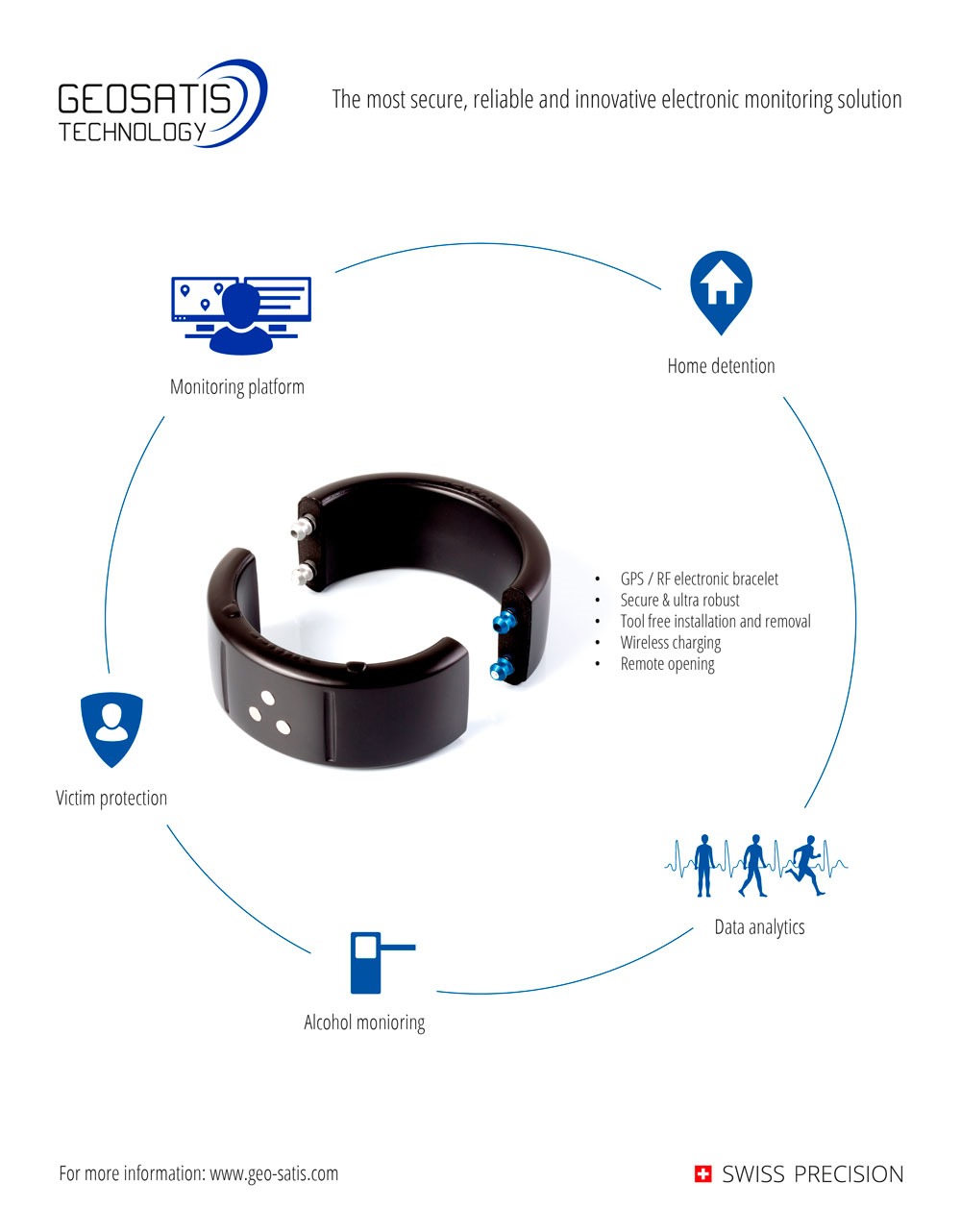The understanding that it is possible to make electronic monitoring (EM) technology evolve into the spectrum of preventive action is becoming increasingly consistent.
Artificial intelligence (AI) and big-data analytics (the process of examining large and varied data sets to uncover hidden patterns, unknown correlations, trends, and other useful information that can ultimately lead to better-informed decisions) are growing at an unprecedented pace.
These technologies can potentially render broadly beneficial applications, which can be applied to the electronic monitoring field in the medium term. In fact, AI is already in use in some parts of the world in the criminal justice sector as “algorithms are increasingly aiding law enforcement and judges in carrying out their oaths” (1).
Nevertheless, today’s EM solutions are still focusing exclusively on a reactive approach, meaning that an intervention only takes place when an alarm signals a nonconformity, whether it is a violation of the rules and restrictions imposed (violation of inclusion or exclusion zones or curfew violation in cases of home arrest, for instance), whether tampering is attempted, a failure to keep the bracelet battery charged is detected, or other similar situations.
Together, AI and the big-data analytics result in the identification of trends, patterns, enabling the draw of correlations, as well as risk profiles, by way of the use of all the available data, which is provided by the EM system. Such data include but are not limited to GPS position, speed, movements, motion sensors, tamper sensors; furthermore, a new AI-powered EM system could take historical data into account and mix it with any other relevant source of data to be correlated (other offenders, a map of criminogenic zones, crime scenes, CCTV records, car speed, etc).

A set of functionalities that would enable a predictive intervention consists of tools that allow the supervisor or probation officer to identify a potential problem before it actually occurs. Hence, preventive action would ensure a more and more successful rehabilitation of the monitored offender and reduce recidivism.
Geosatis is increasingly dedicated to studying and developing solutions that will outpace the “traditional” EM technologies. In fact, a comprehensive EM solution with an embedded technology like ours – allowing for a level of control adapted to every user’s specifications, including the monitoring of movement and physical activity –, is the first step to actually going towards a potentially predictive-driven approach to EM.
It is certain that this natural evolution – to accompany the technological developments of the technological golden age we are in – will not be linear: it will certainly pose challenges with regard to data protection and bias, not to mention the implications that such EM advanced features will have on the academic-technical profile of probation agencies’ staff who will be in charge of analysing, drawing conclusions and acting on them.
Artificial intelligence technology may very well touch every part of the criminal justice system rather soon and that’s why we, at Geosatis, are determined to take it further than any other EM provider.
The technological revolution that we advocate, as the world’s most innovative company in this industry, is to add even more capabilities to a solution we have started from scratch and that radically challenged the industry’s status quo. It is not by chance that we are providing for some of the most progressive and successful EM programmes internationally.
(1) Berkman Klein Center. (2018). Core Use Cases and Cross-Cutting Themes. Available at https://cyber.harvard.edu/research/ai/usecases
//

José Demetrio is the founder and Chief Executive Officer of GEOSATIS. He holds an education in electricity and technical certificates in specialised security applications. His innovative and entrepreneurial profile dates to the beginning of his career, which has unfolded, at first, in the security and safety sector. He also worked for telecom operators and contributed to the implementation of jamming solutions for prisons.
Advertisement



